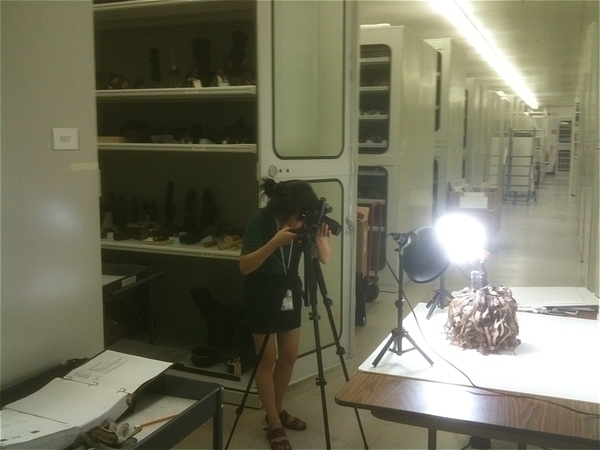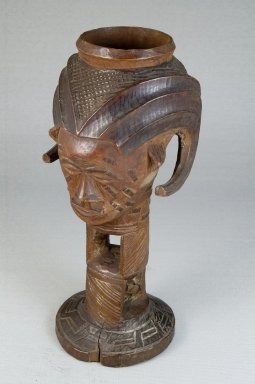Photo Survey of Historic African Collection
Careful watchers of the museum’s online image collections may have noticed some large new batches of African works begin to pop up over the last month.

This summer, with the help of Connie Jang, an intern with the Digital Collections department (and incomparable prep work by Katie Apsey, our Curatorial Assistant, and a loaned photo backdrop from the Egyptian offices), I’ve started a photo survey of one of our most important sub-collections of African objects—the significant number of works acquired by our curator Stewart Culin during a 1922 Museum-sponsored collecting expedition to Europe. While on this trip, Culin purchased several important pieces from William Oldman and Paul Guillaume, pioneering art dealers in London and Paris, respectively, before making his way to Brussels. There, Culin was introduced to an obscure employee of a local veterinary school named François Poncelet who, through means as yet unknown, had amassed a collection of over 1500 pieces, mostly from the Congo. Culin managed to acquire the entire collection for around $2,000—twice his initial budget, but a shrewd investment, as time has told. In addition to being the foundation for the Museum’s African collection, and the subject of the groundbreaking 1923 exhibition Primitive Negro Art, Chiefly from the Congo, this sub-collection is a crucial historical artifact in its own right, reflecting the creation and circulation of Congolese art at a specific (and comparatively early) time and place.
Single Head Goblet (Mbwoongntey), early 20th century. Wood, 8 1/16 x 3 1/2 in. (20.5 x 9.0 cm). Brooklyn Museum, Museum Expedition 1922, Robert B. Woodward Memorial Fund, 22.1485.
Many of these works have not been previously photographed, and this has also served as a crucial opportunity to review and update our records on these works. Every day in the store room brings with it a new discovery, and I look forward to sharing them with our visitors as the project progresses. You can keep an eye on our progress, by visiting this link.

Kevin D. Dumouchelle joined the Brooklyn Museum in 2007. He was promoted to Associate Curator for the Arts of Africa and the Pacific Islands in 2012, having served as Assistant Curator since 2008. In 2011 he conceived and curated African Innovations, the Museum’s first chronological and contextual installation of its African collection. He has also curated a number of exhibitions, and contributed to the writing and editing of a major catalogue of works in the African collection, African Art: A Century at the Brooklyn Museum, published by the Brooklyn Museum in association with DelMonico Books • Prestel in fall 2009. Dumouchelle has published on a range of topics, from architecture and canonical African sculpture to contemporary photography, and he has received numerous fellowships and awards. Dumouchelle earned an M.A. and M.Phil. in Art History and Archaeology from Columbia University, where he taught art history and is completing his Ph.D. He has pursued research in Morocco, Mali, and Ghana, and is the recipient of a first-class Master’s degree in history from Oxford University and a B.S. in Foreign Service from Georgetown University.

